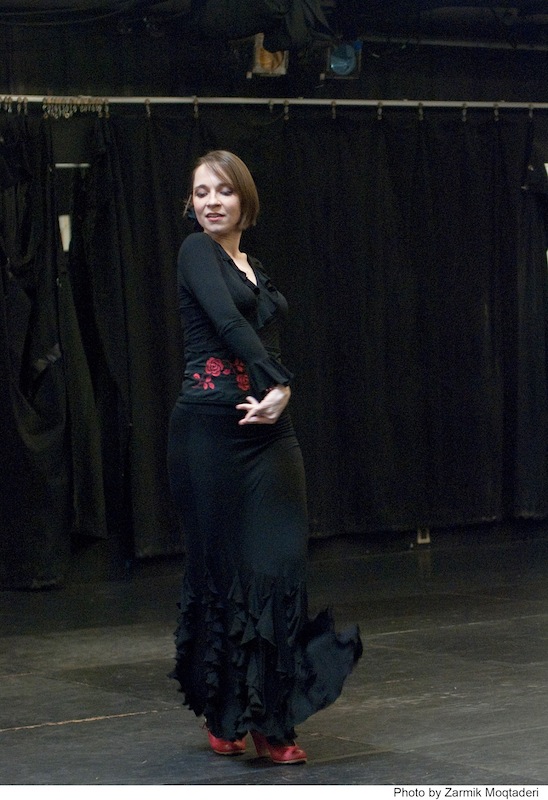The Daily Free Press recounts the HUBWeek event in which Center Director Bruce Rosen and medical illustrator Danny Quirk spoke about the intersectionality of human anatomy and visual art.
The secret lives of scientists: Flamenco at the Martinos Center
The Martinos Center is spilling over with talent, attracting many of the brightest minds from around the world. But the talent isn’t limited to building radio frequency coils and developing novel pulse sequences for acquisition of MR data.
Anastasia Yendiki is a researcher who focuses on methods for mapping the circuitry of the human brain. At the Martinos Center, she develops robust data analysis methods for MRI. Her algorithm for automated tractography is distributed publicly as part of the FreeSurfer software package, and is used at dozens of labs worldwide to study how brain pathways are affected by disease.
Anastasia is also a flamenco dancer.

Photo by Zarmik Moqtaderi
She started learning the form five years ago. While attending an MIT journal club, she met Lauren O’Donnell, a diffusion MRI researcher at Brigham and Women’s Hospital. Lauren had recently returned from Spain, where she had spent the previous year in advanced study of flamenco, and was now teaching a class of her own.
Anastasia signed up for the class, absorbing all she could about the dance and putting it into practice. Two years after she joined, she was promoted to the “Flamenco Boston” performing group.
She is especially drawn to the synergistic aspect of flamenco, she says: There is no designated leader or follower but rather a guitarist, singer and dancer exchanging cues and taking turns leading and following. Flamenco uses a set of musical modes, each with its own structure and mood. The performers generally improvise, but always within the constraints defined by these modes. This enables the music and the dance to flow as if one.
Anastasia was also won over by the full range of emotions expressed in—and accepted by—flamenco.
“There is a dance for everything, from exuberance to devastation,” she says. “It is a space where you can express any of these emotions—in public, no less—and still be strong. You are being strong not by suppressing the emotion, but by experiencing it fully. You are being strong by baring your soul, not by concealing it. There is no deception in flamenco.”
Dance and science may seem like unrelated pursuits, appealing to contrasting sides of a performer’s personality. Not so, says Anastasia.
“There is an analytical aspect to flamenco that would appeal to an engineer like myself. You have a set of constraints and within those you are trying to come up with something that is creative, elegant, and effective.”
“In that sense,” she says, “it has much in common with designing image analysis algorithms, doesn't it?”
Anastasia performs this Sunday, April 20, at Flamenco and Tapas at BarLola. Further information here: http://www.flamencoboston.com/barlola/


